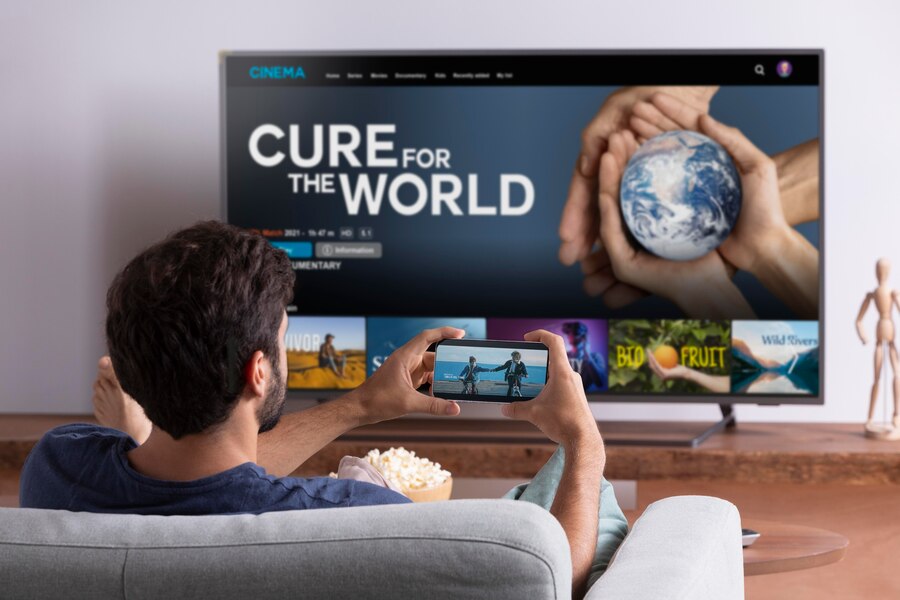The World of Television: How IPTV is Changing Media Consumption
The World of Television: How IPTV is Changing Media Consumption
Blog Article

The domain of TV has undergone a notable shift in recent years, with IPTV emerging as a top platform for contemporary media consumption. Internet Protocol Television offers a flexible and adaptable way to experience a wide range of television channels, avoiding the restrictions of traditional TV methods. Rather than relying on cabled or satellite links, this system streams programming over the internet, letting viewers to watch real-time TV, on-demand programming, and cinema straight to their screens. This shift has not only expanded the diversity of content accessible to users but also introduced new heights of accessibility and personalization.
One of the important upsides of this system is its power to meet the diverse tastes of users globally. Unlike conventional television services that typically offer a restricted range of broadcasts, IPTV platforms usually feature an comprehensive catalog of channels from across the world. This implies users can tap into international news, sports, entertainment, and cultural programming that might otherwise be inaccessible in their area. For expats and worldwide audiences, this platform is a essential link to their native lands, providing them the means to stay in touch with native programming, wherever they reside.
This system are also famous for their versatility and intuitive design. Consumers can frequently tailor their channel bundles, choosing only the content that interests them, rather than being locked into a rigid bundle of TV stations. This customization option guarantees that viewers are paying for exactly what they desire to see, and nothing else. Moreover, the ability to watch programs on-demand ensures that audiences are no longer tied to the programming times of conventional TV; they can watch what they prefer, whenever they want, whether it’s following up on missed shows or binge-watching an complete season.
Another major advantage of this system is the high quality of content that it provides. With advancements in internet connectivity and technology, these services can deliver HD quality and even ultra-HD content, ensuring a watching experience that matches, if not exceeds, traditional television. This crystal clear streaming capability improves the overall experience, particularly for sports fans and cinema lovers who desire crisp, clear images and high-quality sound. Moreover, these services frequently offer additional functionalities like recording features, allowing users to halt, rewind, and save live television, offering an extra layer of ease to their television experience.
The integration of IPTV with multiple devices is another aspect contributing to its increasing adoption. Differently from standard broadcasts, which is typically restricted to a single television in a set location, IPTV can be accessed on a variety of screens, including connected TVs, smartphones, tablets, and PCs. This cross-device usage makes certain that consumers can access their favorite content on the go, whether they are at their residence, on the road, or on vacation. The mobility of these platforms is notably advantageous in today’s hectic world, where accessibility and accessibility are paramount.
In addition to live TV and request-based media, many platforms provide a variety of engagement options that boost audience interaction. For example, some platforms offer social media links, allowing viewers to share their favorite shows and engage with other viewers IPTV purchase options in live time. Others provide custom picks according to media preferences, simplifying for audiences to explore new shows that matches their tastes. These engagement tools not only enrich the viewing experience but also build a connectedness among viewers, fostering greater loyalty to the system.
As the interest in this technology continues to grow, the sector is experiencing rapid innovation and increase. New services are joining the market, each delivering distinctive features and media lineups to draw viewers. This competition is encouraging advances in service quality, pricing models, and client services, benefiting customers who have more options to select. Moreover, developments in tech are likely to further enhance the user experience, with possibilities such as virtual reality features, AI-powered content recommendations, and even more interactive media options on the way.
However, the growing popularity of this technology has also caused issues, particularly in terms of government and licensing issues. As these services often broadcast programming from various countries, they must handle a intricate network of legalities and broadcast permissions. Ensuring that that media is legally acquired and shared is critical for the long-term viability of the market. Moreover, the easy access to a large selection of programming poses issues about unauthorized access and unauthorized streaming, which can diminish the legitimacy of legitimate platforms. Dealing with these challenges is essential to preserving the viability and viability of IPTV as a major television option.
Despite these issues, the outlook of this platform looks promising. As more viewers look for substitutes to traditional cable and satellite television, this platform is well-suited to meet the need for adaptable, top-quality, and broad media selections. The capacity to tailor content to user tastes, coupled with the convenience of on-demand viewing and multi-device access, makes this system an appealing selection for contemporary users. Whether it’s staying connected to global media, accessing a more diverse catalog, or simply gaining more influence over what and when to watch, this system delivers a attractive alternative for today’s entertainment needs.
In conclusion, this technology represents a significant evolution in the way we experience broadcasting. It offers a standard of variety, ease, and excellence that is unmatched by traditional broadcasting methods. As technology continues to progress and the desire for tailored content grows, this platform is likely to become an increasingly crucial part of the worldwide entertainment industry. For users seeking a more personalized and convenient television experience, this system provides a powerful choice that meets its promises of diversity, adaptability, and high-quality content.